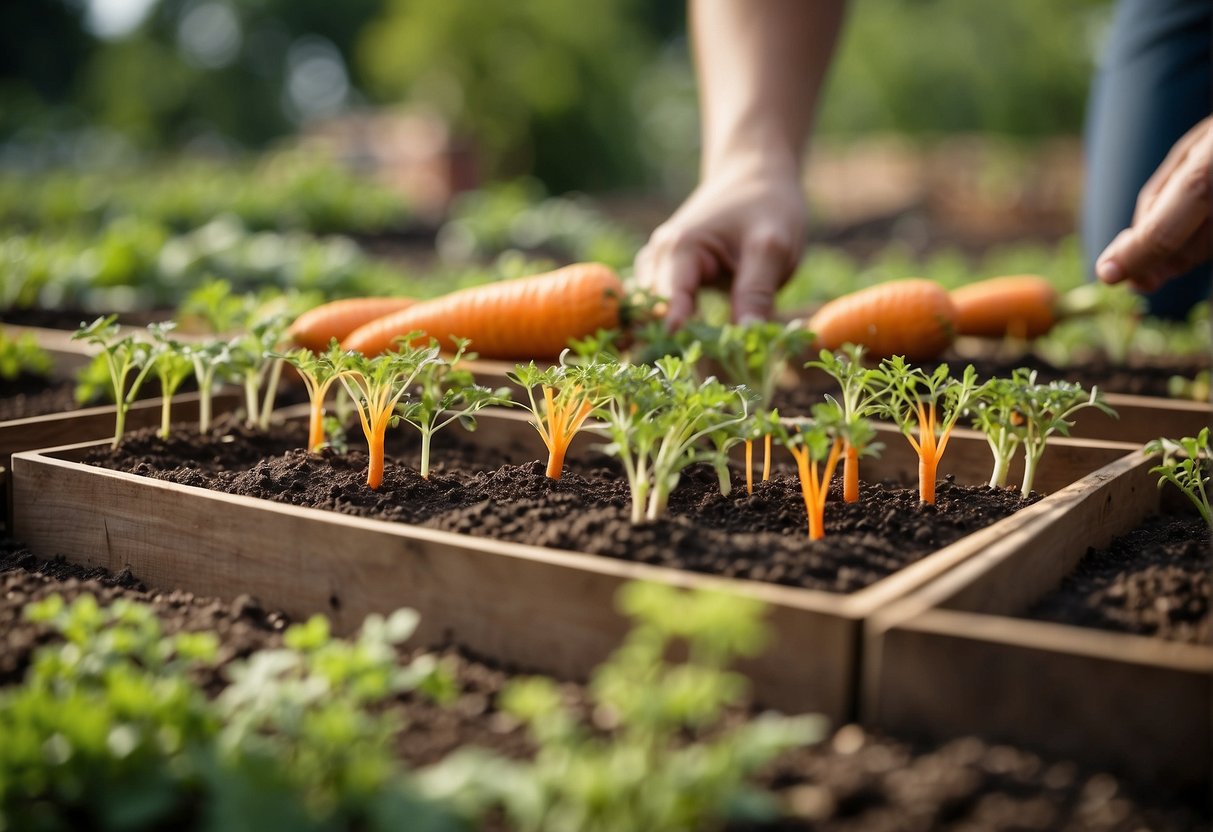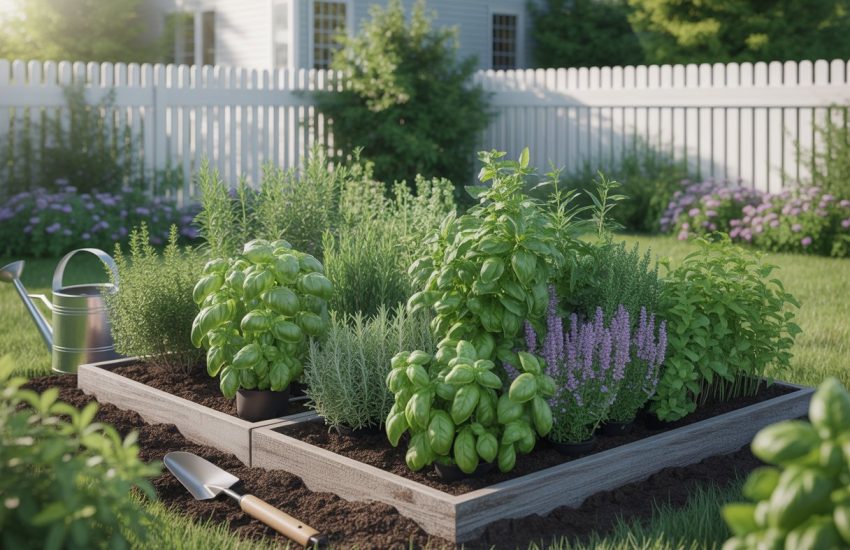How to Plant Carrot Seeds: A Step-by-Step Guide
Carrots are a popular root vegetable that can be grown in a variety of climates. Planting carrot seeds can be an easy and rewarding experience with the right tools and techniques. In this article, we will provide a step-by-step guide on how to plant carrot seeds and ensure a successful harvest.

The first step in planting carrot seeds is to choose the right location. Carrots prefer well-drained soil that is free of rocks and other debris. It is also important to choose a location that receives at least six hours of sunlight per day. Once you have selected the location, you will need to prepare the soil by tilling it and removing any weeds or rocks.
Next, it is time to plant the carrot seeds. Carrot seeds should be sown directly into the soil, as they do not transplant well. The seeds should be planted about a quarter of an inch deep and spaced about an inch apart. It is important to keep the soil moist during the germination process, which can take anywhere from one to three weeks. With proper care and attention, you can enjoy a bountiful harvest of fresh, delicious carrots.
Choosing the Right Carrot Variety

When it comes to planting carrot seeds, choosing the right variety is crucial. With so many different types of carrots available, it can be overwhelming to decide which one to plant. This section will provide a clear understanding of carrot varieties and how to select seeds that are suitable for your climate.
Understanding Carrot Varieties
Carrots come in a variety of shapes, sizes, and colors. Some are long and slender, while others are short and stubby. The color of carrots can range from orange to purple, white, red, and even yellow. Carrots are also classified based on their sweetness, juiciness, and texture.
One important factor to consider when selecting a carrot variety is its beta carotene content. Beta carotene is a nutrient that is converted into vitamin A in the body. Carrots are an excellent source of this nutrient, which is essential for good eyesight, healthy skin, and a strong immune system.
Selecting Seeds for Your Climate
When choosing carrot seeds, it is important to consider your climate. Some varieties of carrots are better suited for cooler climates, while others thrive in warmer temperatures. If you live in an area with a short growing season, it is best to choose a variety that matures quickly.
It is also important to consider the soil conditions in your area. Carrots grow best in loose, well-drained soil that is rich in organic matter. If your soil is heavy or clay-like, you may need to amend it with compost or other organic materials before planting.
In summary, selecting the right carrot variety is essential for a successful harvest. Understanding the different types of carrots and their characteristics can help you make an informed decision. By choosing seeds that are suitable for your climate and soil conditions, you can ensure that your carrots will grow strong and healthy.
Preparing the Planting Site

Amending Garden Soil
Before planting carrot seeds, it is important to ensure that the soil is rich in nutrients and has good drainage. One way to achieve this is by amending the garden soil with compost or other organic matter. This can be done by mixing compost into the soil to a depth of about 6 inches. Doing so will improve the soil structure and provide the necessary nutrients for healthy carrot growth.
Soil Temperature and Conditions
Carrots prefer cool temperatures and can tolerate light frosts, but they do require a certain level of warmth in order to germinate. The ideal soil temperature for planting carrot seeds is between 50-70°F. It is important to avoid planting carrots in soil that is too wet or too dry, as this can lead to poor germination and stunted growth.
Container and Raised Bed Options
If planting in a garden bed is not an option, carrots can also be grown in containers or raised beds. Containers should be at least 12 inches deep to allow for proper root development. Raised beds can be constructed using a variety of materials, such as wood, cinder blocks, or even straw bales. When using raised beds, it is important to ensure that the soil is well-draining and has been properly amended with compost or other organic matter.
By taking the time to properly prepare the planting site, gardeners can ensure that their carrot seeds have the best chance of success. Whether amending garden soil, monitoring soil temperature and conditions, or exploring container and raised bed options, there are a variety of ways to create a healthy and productive planting environment.
Sowing Carrot Seeds
Carrots are a popular root vegetable that can be easily grown in a home garden. Sowing carrot seeds is a simple process that can be done directly in the soil. In this section, we will cover the direct sowing techniques, creating furrows, and seed spacing and depth.
Direct Sowing Techniques
Direct sowing is the process of planting seeds directly into the soil, rather than starting them indoors and transplanting them later. This method is commonly used for planting carrot seeds. To direct sow carrot seeds, follow these steps:
- Choose a sunny spot in the garden with well-draining soil.
- Clear the area of any debris and weeds.
- Loosen the soil to a depth of at least 12 inches.
- Evenly space the carrot seeds in shallow furrows, about 1/4 inch deep.
- Cover the seeds with soil and gently firm the soil.
Creating Furrows
Creating furrows is an important step in sowing carrot seeds. Furrows are shallow trenches that are used to evenly space the seeds and ensure proper germination. To create furrows, follow these steps:
- Use a hoe or rake to create shallow furrows in the soil, about 1/4 inch deep.
- Space the furrows about 12 inches apart.
- If using seed tape, place the tape in the furrow and cover with soil.
- If not using seed tape, evenly space the seeds in the furrow.
Seed Spacing and Depth
Seed spacing and depth are important factors in sowing carrot seeds. Proper spacing and depth will ensure that the seeds germinate and grow into healthy plants. To ensure proper seed spacing and depth, follow these guidelines:
- Space the seeds about 2 inches apart in the furrow.
- Cover the seeds with soil, about 1/4 inch deep.
- Water the area gently to help the soil settle around the seeds.
In conclusion, sowing carrot seeds is a simple process that can be done directly in the soil. By following the techniques outlined in this section, you can ensure that your carrot seeds germinate and grow into healthy plants.
Caring for Growing Carrots

Watering and Moisture
Carrots require consistent moisture to grow properly. It is important to keep the soil moist but not waterlogged. Overwatering can cause the seeds to rot, while underwatering can cause the carrots to become dry and tough. The best way to water carrots is to give them a deep watering once a week. This will help the roots grow deep into the soil and produce healthy, full-sized carrots.
Thinning Seedlings
Once the carrot seedlings have sprouted, it is important to thin them out. This means removing some of the seedlings to give the remaining ones room to grow. Thin the seedlings to about 2-3 inches apart. This will help prevent overcrowding and ensure that each carrot has enough space to grow.
Weeding and Maintenance
Weeding is an important part of caring for growing carrots. Weeds can compete with carrots for nutrients and water, which can stunt their growth. It is important to remove weeds as soon as they appear. This can be done by hand or with a hoe.
In addition to weeding, it is important to fertilize the soil to ensure that the carrots have enough nutrients to grow. Carrots require a lot of potassium, which can be added to the soil using a potassium-rich fertilizer. Apply the fertilizer according to the manufacturer’s instructions.
Overall, caring for growing carrots requires consistent watering, thinning, weeding, and fertilizing. With proper care, you can enjoy a bountiful harvest of delicious, healthy carrots.
Harvesting and Storing Carrots
When and How to Harvest
Harvesting carrots is a crucial step in the growth process. It is important to harvest them at the right time to ensure that they are at their peak flavor and texture. Carrots are usually ready to be harvested when they have reached full size, which is typically around 2-3 months after planting. However, the exact time will depend on the variety of carrot and the growing conditions.
When harvesting carrots, it is important to be gentle to avoid damaging them. The best way to harvest carrots is to loosen the soil around them with a garden fork or spade, and then gently pull them out of the ground by the foliage. If the carrots are tightly packed together, thin them out before harvesting to ensure that each carrot has enough space to grow.
Storing for Freshness
After harvesting, it is important to store carrots properly to maintain their freshness and flavor. The first step is to remove the foliage, which can cause the carrots to wilt and lose moisture. Next, gently wash the carrots to remove any dirt or debris.
There are several ways to store carrots, depending on how quickly they will be consumed. For short-term storage, place the carrots in a plastic bag or container and store them in the refrigerator. This will keep them fresh for up to two weeks.
For longer-term storage, consider storing the carrots in a cool, dark place such as a root cellar or basement. Make sure the carrots are stored in a container filled with sand or sawdust to keep them moist. This will keep them fresh for up to several months.
In conclusion, harvesting and storing carrots is an important part of the growing process. By following these tips and techniques, you can ensure that your carrots are at their peak flavor and texture for fresh eating or long-term storage.
Frequently Asked Questions

What is the optimal spacing for planting carrot seeds?
The optimal spacing for planting carrot seeds is about 3-4 inches apart. This will allow enough room for the carrots to grow without overcrowding each other. It is also important to make sure the soil is well-drained and free of rocks or other debris that might impede the growth of the carrots.
Can you grow carrots in containers, and if so, how?
Yes, you can grow carrots in containers. Choose a container that is at least 12 inches deep and wide enough to accommodate the number of carrots you want to grow. Fill the container with well-draining soil, leaving about an inch of space at the top. Plant the carrot seeds about 1/4 inch deep and water them regularly. Make sure the container is placed in an area that receives plenty of sunlight.
What are the benefits of pre-soaking carrot seeds, and what is the method?
Pre-soaking carrot seeds can help speed up the germination process and improve the overall health of the plants. To pre-soak carrot seeds, simply place them in a bowl of warm water for about 10-15 minutes before planting. This will help soften the seed coat and make it easier for the seed to sprout.
What are some effective companion plants for carrots?
Carrots grow well with a variety of companion plants, including onions, garlic, leeks, and chives. These plants can help deter pests and improve the overall health of the carrots. However, it is important to avoid planting carrots with other root vegetables, as they may compete for nutrients and space.
How long does it typically take for carrots to mature from seeds?
Carrots typically take about 70-80 days to mature from seeds. However, this can vary depending on the variety of carrot and the growing conditions. It is important to keep the soil moist and provide plenty of sunlight to ensure the carrots grow properly.
What are the best conditions and seasons for planting carrot seeds?
Carrots grow best in cool weather and should be planted in early spring or late summer. The soil should be well-drained and free of rocks or other debris that might impede the growth of the carrots. It is also important to provide plenty of sunlight and keep the soil moist throughout the growing season.


